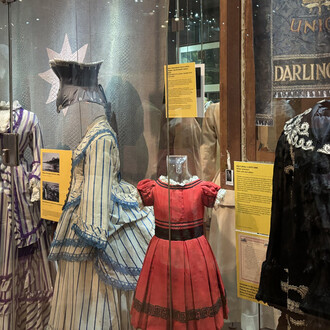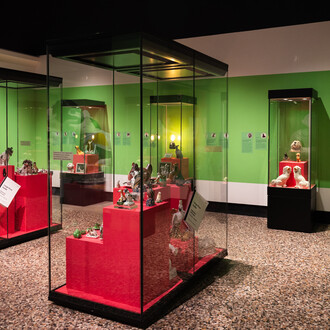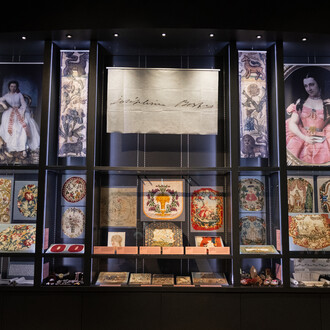Blue and white china is often displayed at home for its decorative qualities, but in Paul Scott’s hands domestic ceramics mutate into subversive comments on our life and times.
Scott is an artist best known for his research into ceramics and print, creating highly individual pieces that blur the boundaries between fine art, craft and design.
In Confected, Borrowed and Blue, opening at The Bowes Museum in Barnard Castle on Saturday 14 February 2015, Scott – an expert on printed industrial tableware - turns the familiar into the alien, his expert manipulation of familiar motifs like the famous Willow Pattern giving his work a special significance and fascination.
His appropriation of traditional patterns as vehicles for socio-political commentary has made his work unmistakeable. At first glance, the fighter jet streaking across the sky, the radioactivity warning sign or the starkly rising drilling platform might go unnoticed among the tranquil rural landscapes. But as the subliminal messages impact on the subconscious the effect is unforgettable and certainly not what you’d expect to find on the average dinner plate.
Some pieces employ undecorated factory tableware, or ‘blanks’, which Scott overprints to dramatic effect. Take his Cockle Pickers Tea Service, which responds to the tragic drowning of 19 Chinese gang workers in Lancashire’s Morecambe Bay. The simple but effective images use elements from the Willow Pattern, showing the water unavoidably rising to engulf the scene. Made to commemorate the passing of the parliamentary bill to abolish the Slave Trade, it also acts as a reminder that slavery remains an issue in 21st Century Britain.
A ghost factory, bearing the legend Spode Closed, overprinted onto a classic Spode Italian plate, laments the demise of the ceramics industry in Britain, with the exhibition featuring new work derived from a period of research in the Spode archive.
Scott’s work can be found in private and public collections around the globe, including the V&A in London; The National Museum in Sweden; The National Decorative Arts Museum in Norway and the Museum of Art and Design in New York, while his commissioned work can be seen in public places in the North of England including Newcastle-upon-Tyne, Gateshead, Carlisle and Maryport.
He is the author of several publications, including Horizon, Transferware and Contemporary Ceramics, to be published in January 2015. Based in Cumbria, he has ongoing connections with a number of universities, including Manchester Metropolitan, where he was awarded a PhD in 2010, and Oslo National Academy of the Arts in Norway, where he is a Professor of the Ceramic Arts.
A founder member of AIR, the largest ever representative body for artists in the UK, he is also a member of the International Academy of Ceramics. Further details about his life and work can be found at www.cumbrianblues.com
The exhibition, organised by The Holburne Museum, Bath, runs at The Bowes Museum from 14 February until 12 April 2015, from where it will tour to The Harley Gallery, Worksop; Aberystwyth Arts Centre, and The Potteries Museum and Art Gallery, Stoke-on-Trent.















